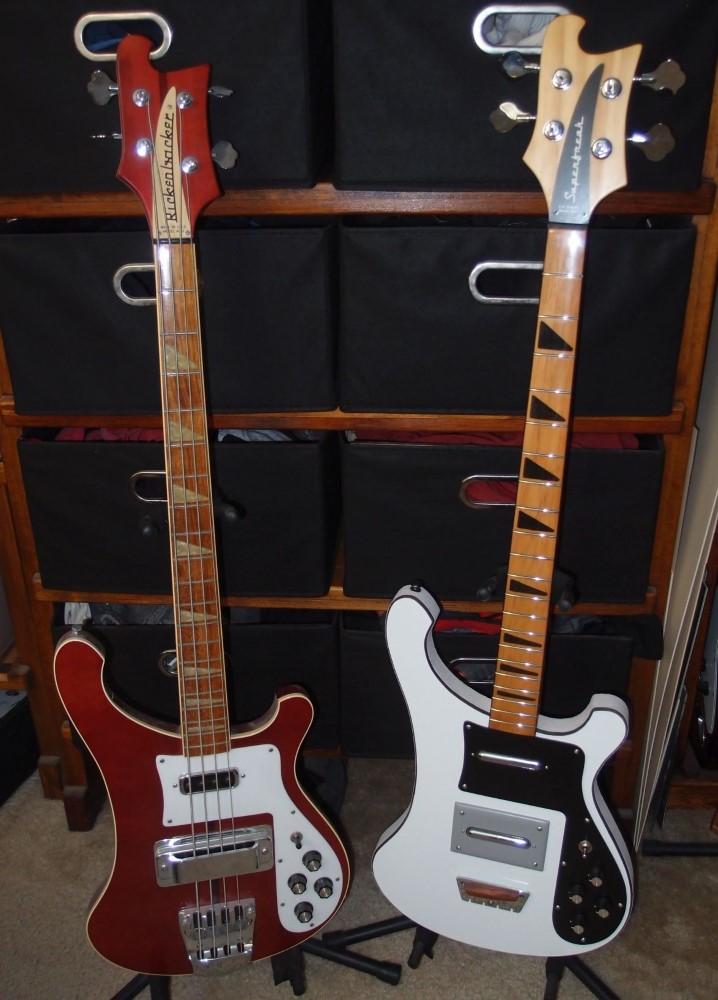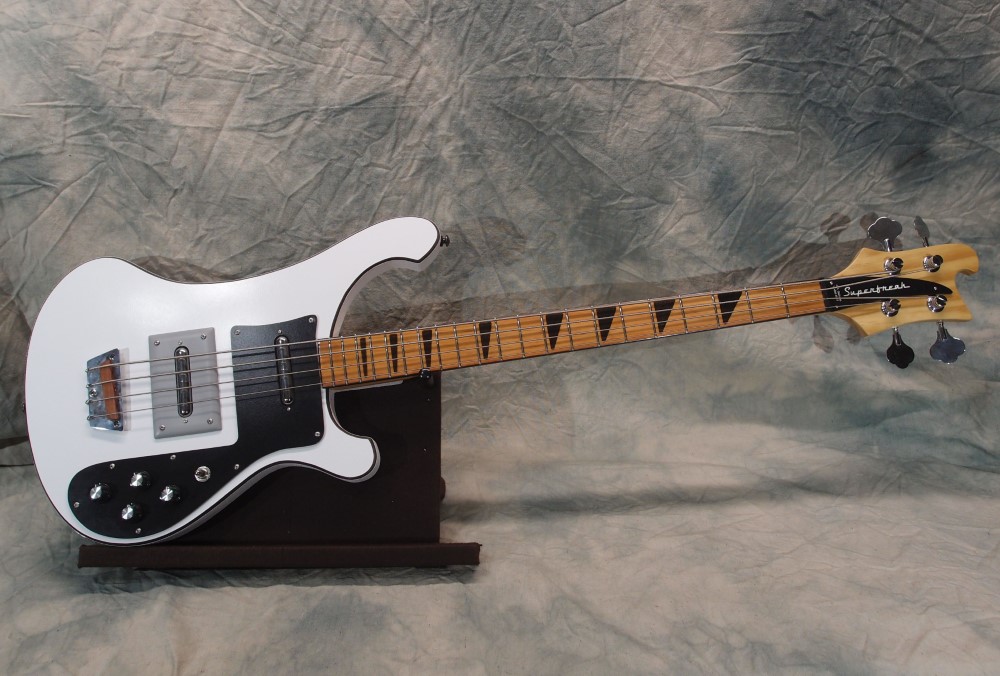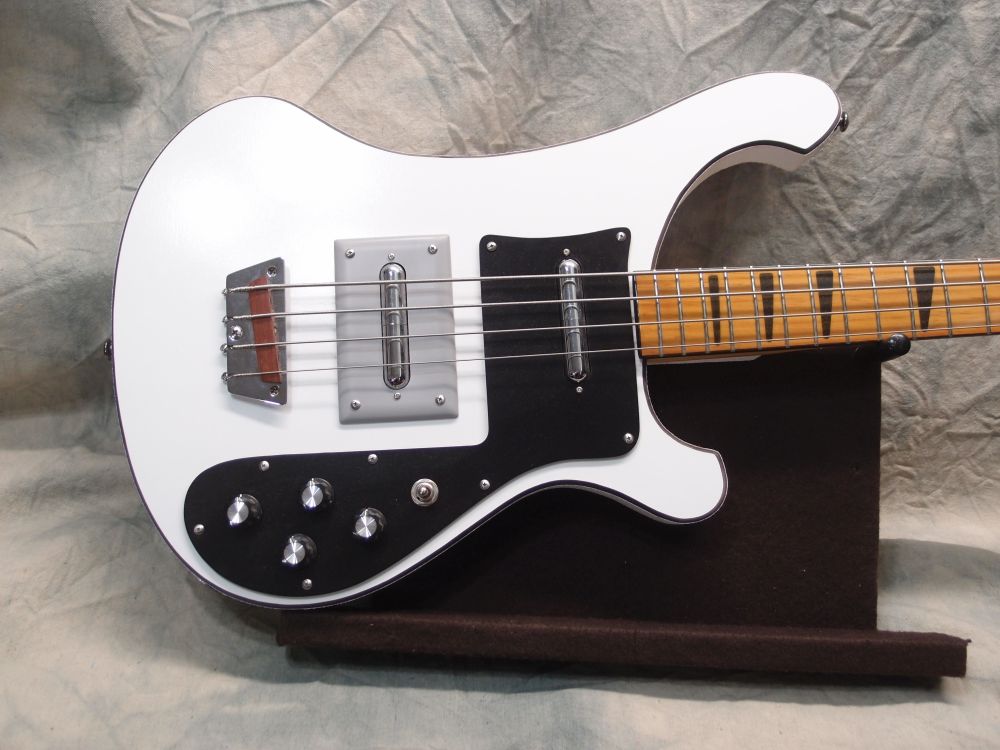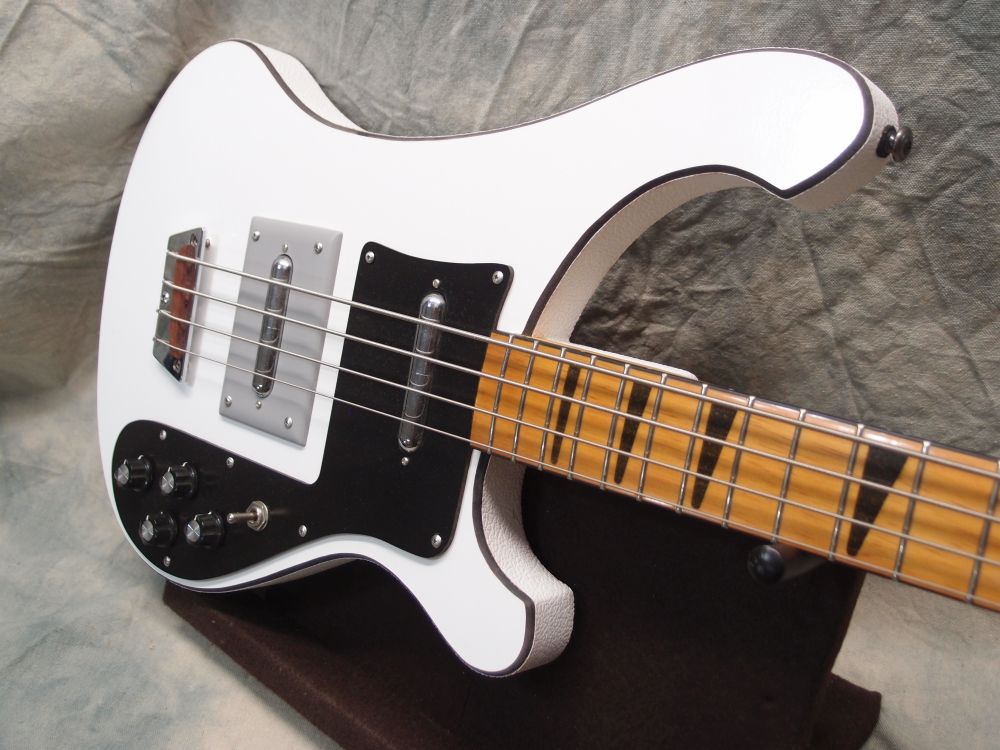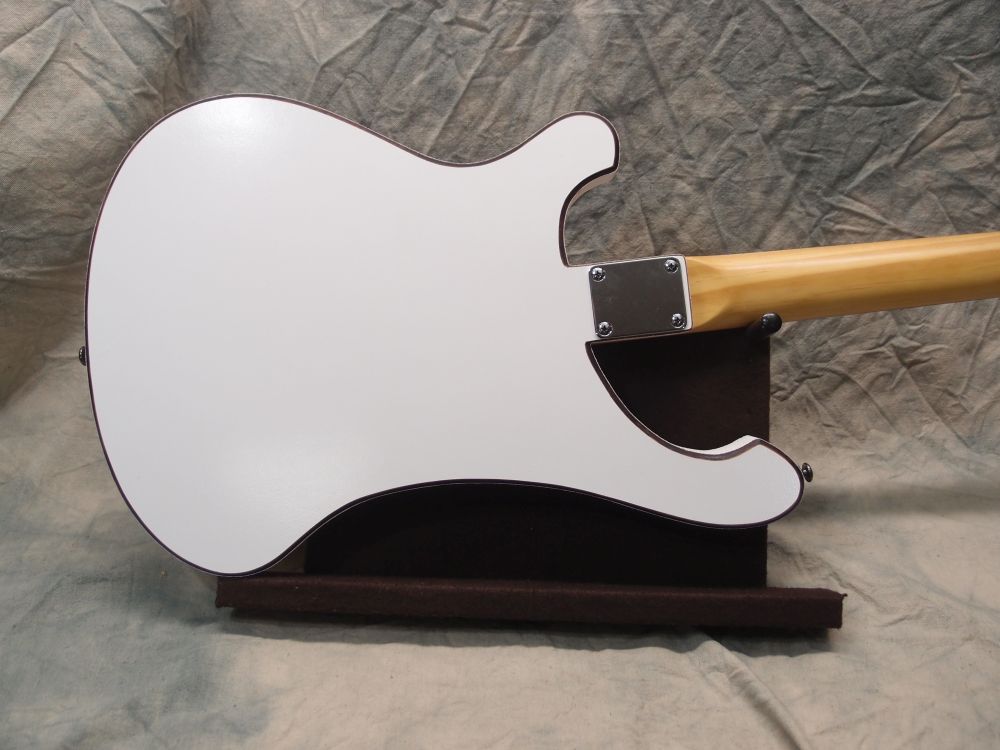July 27, 2020
Superfreaky Part IVa
July 27, 2020
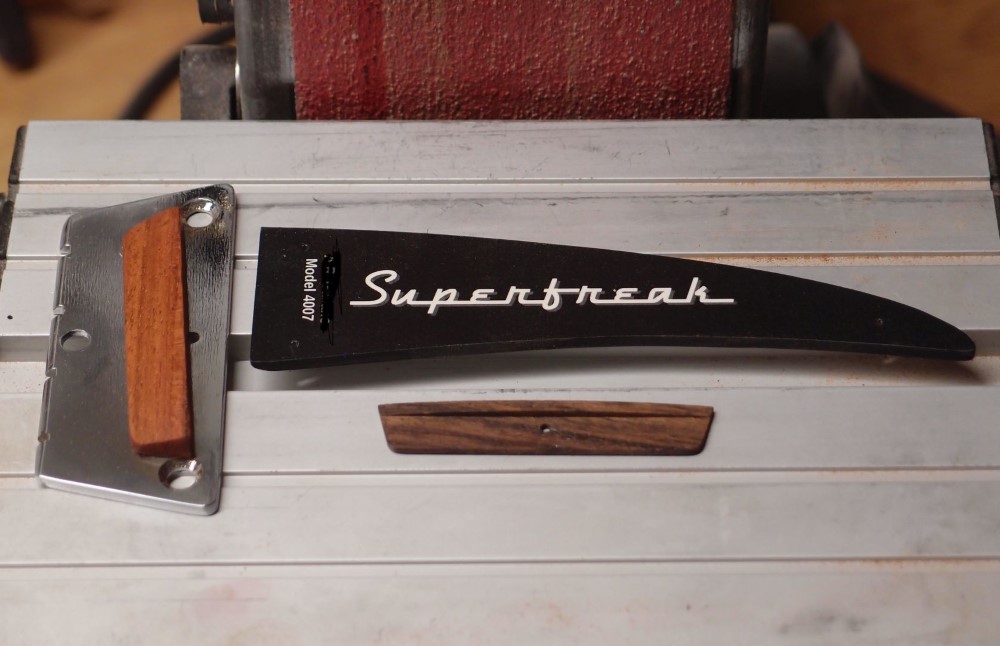
Some small parts for the new Ric. The logo is laser-printed on an adhesive packing label. A coat of poly locks-in the toner. The font is a free one called Dymaxion. It is a pretty good match for the Ric logo, which was actually hand-drawn.
Then I made a new saddle for the bridge from a scrap of super-hard Brazilian Cherry. I never liked the shape of the original saddle. The new one is much thicker, with a 10" radius to match the neck. The color also matches the neck. A bit of linseed oil for a finish.
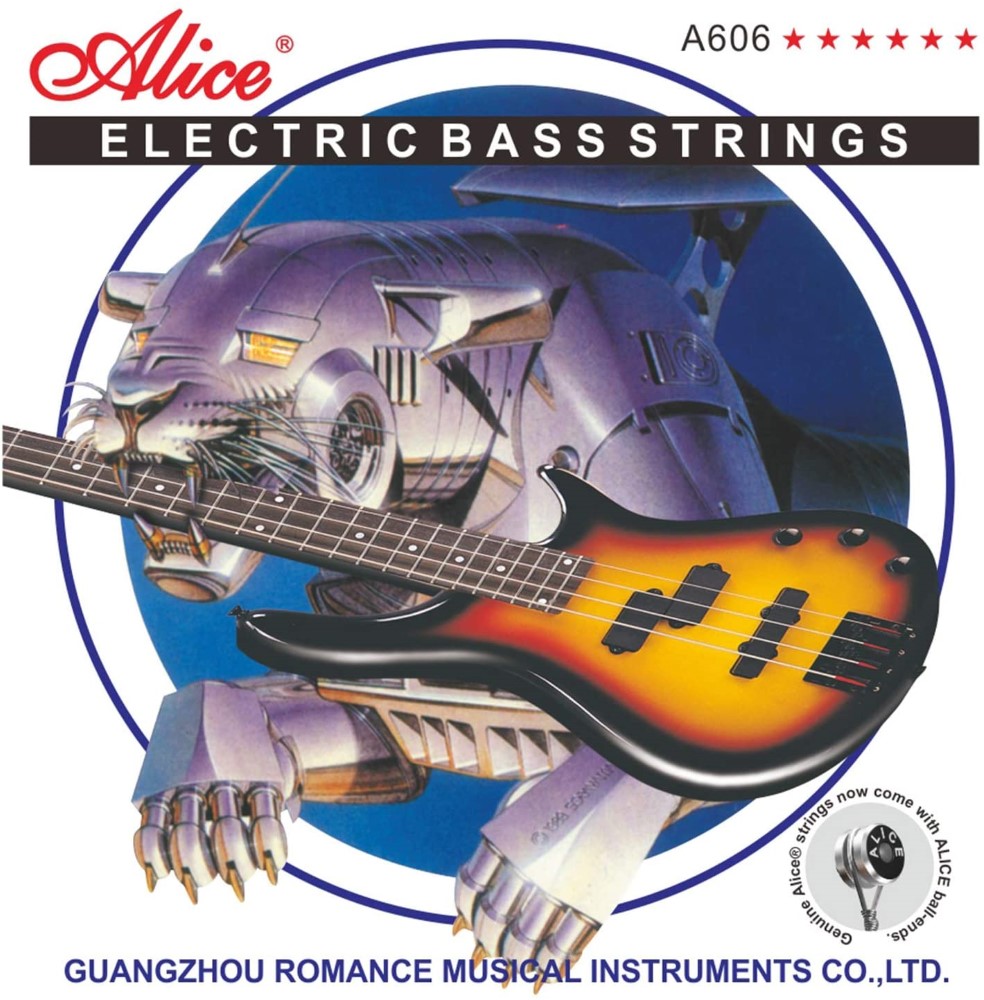
Finally I ordered a set of "Alice" strings. These are not the cheapest you can find, but they are the cheapest that have at least some good reviews. The whole theme of this build is cheap and cheerful, and an expensive set of strings would go against that. We'll see how these Alice strings are.
EBay is not what it used to be. A few years ago, you could find all sorts of nice parts cheap. Now there is much less. I haven't seen a Bronco bridge in over a year. And the bargains are gone too, what you can find is much more expensive now.
